Are avocados fruits or vegetables? This question often stirs up confusion. Avocados, with their creamy texture and unique taste, are actually fruits. But why does the debate exist? We’ll dive into the botanical and culinary aspects that make avocados an interesting case.
We’ll explore the avocado’s journey from tree to table, highlighting its rich nutrient content and the benefits of its healthy fats. From heart health to fetal development, avocados offer a wide range of advantages. We’ll also touch on their potential in cancer prevention and their role in mood enhancement.
Curious about adding more avocados to your diet? We’ve got you covered with creative and easy-to-follow tips. Whether it’s using avocados as a butter substitute, in pasta sauce, or even in ice cream, there’s a delicious option for everyone.
- Related article: Comparing Vegetable vs Fruit
6 Key Takeaways on Is Avocado a Fruit or Vegetable
- Avocados are fruits because they are the seed-bearing part of the avocado tree, fitting the botanical classification of a fruit.
- Avocado oil is considered a healthy oil. It’s rich in monounsaturated fats and polyphenols, which are anti-inflammatory compounds that protect against chronic conditions.
- Avocados contain a natural plant sterol called beta-sitosterol. This helps keep your cholesterol levels in a healthy range. Eating an avocado a day can reduce levels of bad cholesterol and boost antioxidant levels.
- The potassium in avocados helps lower blood sodium levels, which balances blood pressure and eases tension in blood vessels.
- Avocados are packed with nutrients including vitamins C, E, K, and B6, as well as lutein, magnesium, pantothenic acid, omega-3 fatty acids, riboflavin, and beta-carotene.
- Avocados contribute to eye health due to lutein and zeaxanthin. These compounds protect against UV light damage and improve the absorption of beta-carotene, which can reduce the risk of macular degeneration.
What Is an Avocado?
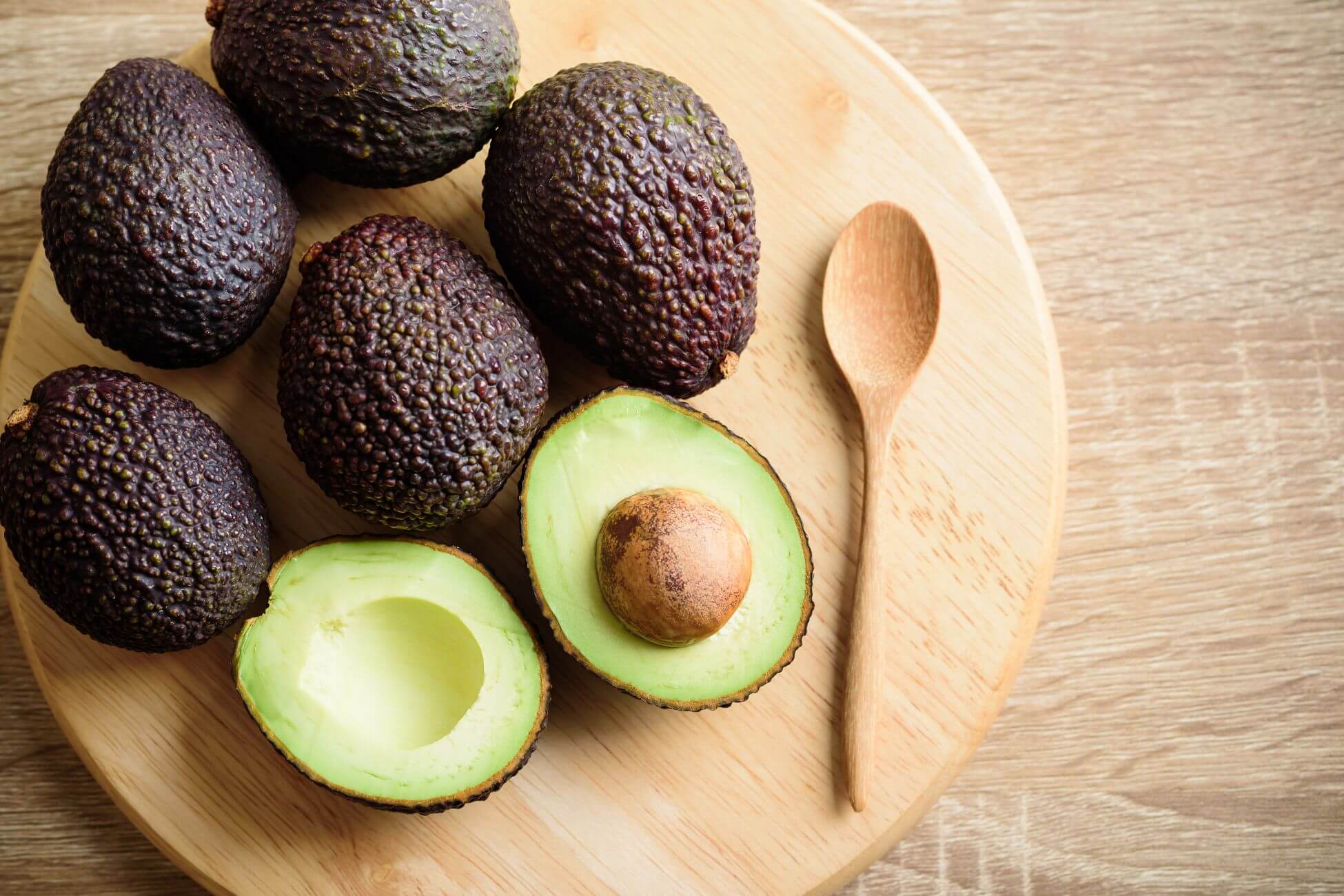
To make the long story short — yes, avocados are fruits. They are bright green fruits with dark leathery skin and a large pit. Also called butter fruit or alligator pear, they grow on trees with small greenish flowers and typically grow in regions with warm climates like Mexico and Central America.
You can tell an avocado is ripe when its outside skin turns black or dark purple and it yields to gentle pressure. It should be ready to refrigerate or eat at this point.
The inner flesh of an avocado is smooth and creamy, covered with a dark green layer that is bumpy to the touch.
In regions like California, you can find these fruits growing year-round. It’s not unusual to find avocado trees with healthy ripe avocados in the Golden State. People usually harvest them and wait until they ripen.
One of the great things about Avocados is that they are among the few fruits that contain healthy unsaturated fats. This quality makes them great to include in your diet.
Is Avocado a Fruit or a Vegetable?
So, why is the Avocado a fruit and not a vegetable? Technically, the avocado is a fruit because it fits the classification of one — it is a tree’s (in this case, the avocado tree) seed-bearing organ. Specifically, it is considered a berry.
However, in culinary terms, the avocado is a vegetable. It fits the description the description of one — it is not sweet and has more of a savory taste. It’s kind of like tomatoes, zucchinis, or squashes, fruits from a botanical standpoint but vegetables when you consider their uses in cooking.
People don’t often consider the botanical definition when deciding if something is a fruit or a vegetable. They mostly base it on culinary traditions, so it’s easy to see why people can mistakenly label avocados as the latter.
Even though the avocado doesn’t neatly fall into the fruit category, it is a botanical fruit without a doubt. It’s a fleshy fruit that contains a seed and develops from a plant’s flower, and that’s all there is to it.
What Are the Health Benefits of Avocados?
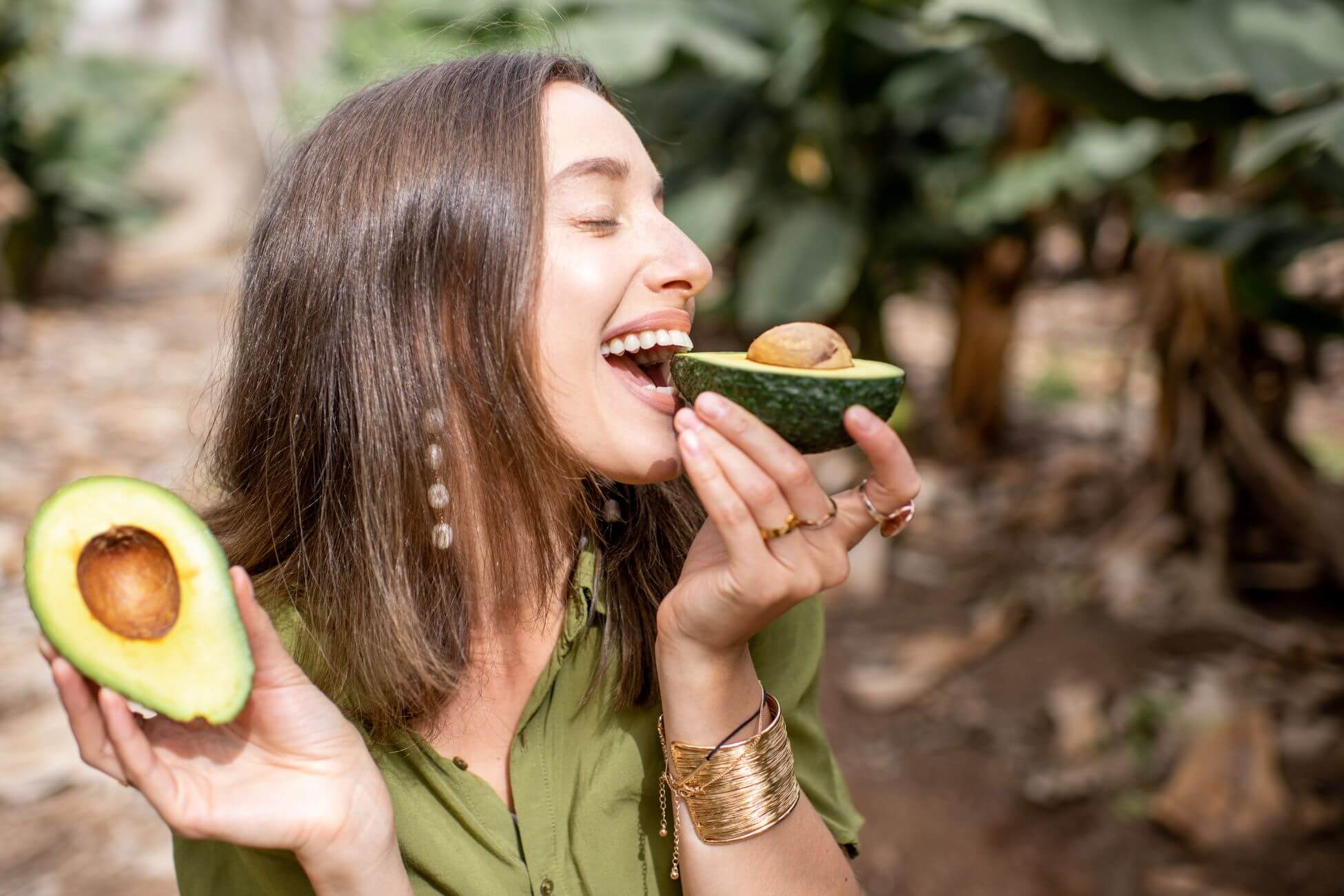
Avocados are a great addition to a healthy diet. They’re packed with nutrients and belong to a select list of fruits with healthy unsaturated fats.
But that’s not even half of it. Here are some of the avocado’s most notable health advantages.
1. Avocados Are Rich in Nutrients
The avocado fruit is a treasure chest of nutrients. They’re full of vitamins C, E, K, and B6, along with lutein, magnesium, pantothenic acid, and omega-3 fatty acids. This tasty fruit also gives you riboflavin and beta-carotene.
The Haas avocado, a favorite for many, sports a rough, dark green skin and stays fresh all year in California. Just a third of a medium Hass avocado (about 80 calories) serves up a feast of nearly 20 nutrients, including heart-healthy potassium, and vitamins K and E.
Eating avocados can help you stay satisfied without feeling heavy. The healthy fats in avocados keep your blood sugar steady by slowing down how fast carbs are digested. It’s a delicious way to balance your diet and feel good.
2. Avocados Help Improve Heart Health
Eating avocados lowers your risk of heart disease, and here’s why:
- Avocado Oil – Avocado oil is considered a healthy oil. It’s rich in monosaturated fats and polyphenols, anti-inflammatory compounds that protect against chronic conditions.
- Beta-Sitosterol – Avocados contain a natural plant sterol called beta-sitosterol. It helps keep your cholesterol levels at a healthy range. According to a study, eating an avocado a day can reduce levels of bad cholesterol and boost antioxidant levels (source).
- Potassium – The potassium in avocados lowers the blood’s sodium levels, balancing blood pressure and easing tension in the blood as a result.
3. Avocados Help Boost Eye Health
Avocados contribute to eye health thanks to the compounds lutein and zeaxanthin. These phytochemicals strengthen antioxidants, boosting the eye’s protection against UV light damage. These fruits also contain carotenoids, which have long been associated with benefits for vision.
The monosaturated fatty acids in avocados also improve beta-carotene absorption, which could reduce macular degeneration — a disease affecting your central vision — with age.
4. Avocados May Help Prevent Osteoporosis
A half avocado supplies about 18% of the recommended daily dose of vitamin K, which when consumed in adequate quantities will increase calcium absorption for bone health.
This green fruit’s vitamin K improves bone health, slows down bone loss, and reduces your chances of getting osteoporosis — a disease that makes your bones more fragile.
The vitamin K2 in avocado, when combined with vitamin D3, helps prevent the buildup of calcium in veins and arteries. It also promotes calcium absorption in bones, helping prevent osteoporosis as a result.
K2 functions as an activator of osteocalcin, which reduces the risk of hypercalcemia (having too much calcium in the blood) by moving to the bones from the blood.
More research might be needed where the combination of vitamin K2 and D3 is concerned, but it should benefit you to take them alongside each other.
5. Avocados May Help Prevent Cancer
A clear link between avocados and cancer prevention is yet to be established. However, these fruits have long been believed to contain compounds that prevent the development of malignant cells.
The folate in avocados is associated with risk reduction for cancers of the colon, cervix, stomach, and pancreas.
It is important to keep in mind that research concerning avocado’s cancer-preventing abilities is limited. Plus, there are concerns about its potential health risks and an emphasis on considering the effect size.
6. Avocados Support Fetal Health During Pregnancy
Folates take another major role in highlighting the health benefits of avocados. These essential compounds for pregnant women can aid in reducing the risks of miscarriage and fetal abnormalities. Plus, the fatty acids in this fruit can boost fetal health and development.
There are 22mg of choline in one cup of avocado. That’s enough to greatly improve brain and nerve development in fetuses.
Incorporate healthy fats by adding coconut oil and avocados into your diet. There are lots of ways to enjoy them as you’ll soon find out below. You can add them to your oatmeal, blend them into a smoothie with other fruits, or eat them alongside your hardboiled eggs.
7. Avocados Improve Digestion and Detoxify the Body

Because of their high fiber content, avocados aid in digestion and prevent constipation. It has also been suggested that these fruits help prevent colon cancer. That’s what good fiber does — it helps the body get rid of toxins and promotes the growth of good bacteria to support gut health.
Both ripe and unripe avocados have the same nutritional content, but ripe ones are tastier and easier to digest. Keep in mind that these changes in the avocado’s qualities are due to the increased fiber content brought on by ripening.
8. Avocados Provide Relief From Osteoarthritis
Avocados contain saponins which may prove to positively affect arthritis in the hip and knee.
ASU or Avocado Soybean Unsaponifiables have been studied for how they can potentially benefit those who have been afflicted with osteoarthritis. As its name suggests, this vegetable extract is derived from soybean and avocado oils. When combined, this mixture of compounds can aid in reducing inflammation and promote cartilage repair.
9. Avocados Help Protect Against Chronic Diseases
The avocado’s monosaturated fatty acids might just be beneficial in the fight to prevent chronic health issues, like cardiovascular disease. You can also count on these compounds to help with inflammation.
This nutrient-dense food may also reduce the risk of different types of cancer. It is rich in healthy fats, fiber, and various vitamins and minerals that contribute to their protective effects.
10. Avocados Help Protect Against Depression
Studies suggest a connection between low levels of folate and depression. Avocados are a great source of folate in your diet.
Avocados are rich in nutrients that may put you in a good mood. Healthy fats, fiber, and micronutrients can boost your happiness, fight fatigue, and improve your energy levels.
However, specific evidence linking avocados to mood improvement is lacking. It would be better to look at this fruit as a supplement for a mood-boosting lifestyle. Add it to your diet to help improve your overall emotional and mental well-being, but make sure to address the other factors as well.
How to Add Avocados to Your Diet
Not only are avocados delicious, but they also have a mild taste that makes them a versatile ingredient. When searching for options on how to include avocado in your diet, consider these options.
1. Raw and Seasoned Avocados
Enjoying avocados can be as simple as adding a touch of salt and pepper. You can also get creative with seasonings like paprika, cayenne pepper, balsamic vinegar, or lemon juice. These flavors bring out the best in avocados.
When you eat avocados plain, you have a lot of tasty options to boost their flavor. You can use salt, pepper, lime or lemon juice, garlic powder, cayenne pepper, or toasted sesame oil. Just sprinkle these on avocado slices or mix them into guacamole for a delicious treat.
2. Use Avocado as a Substitute for Butter or Oil
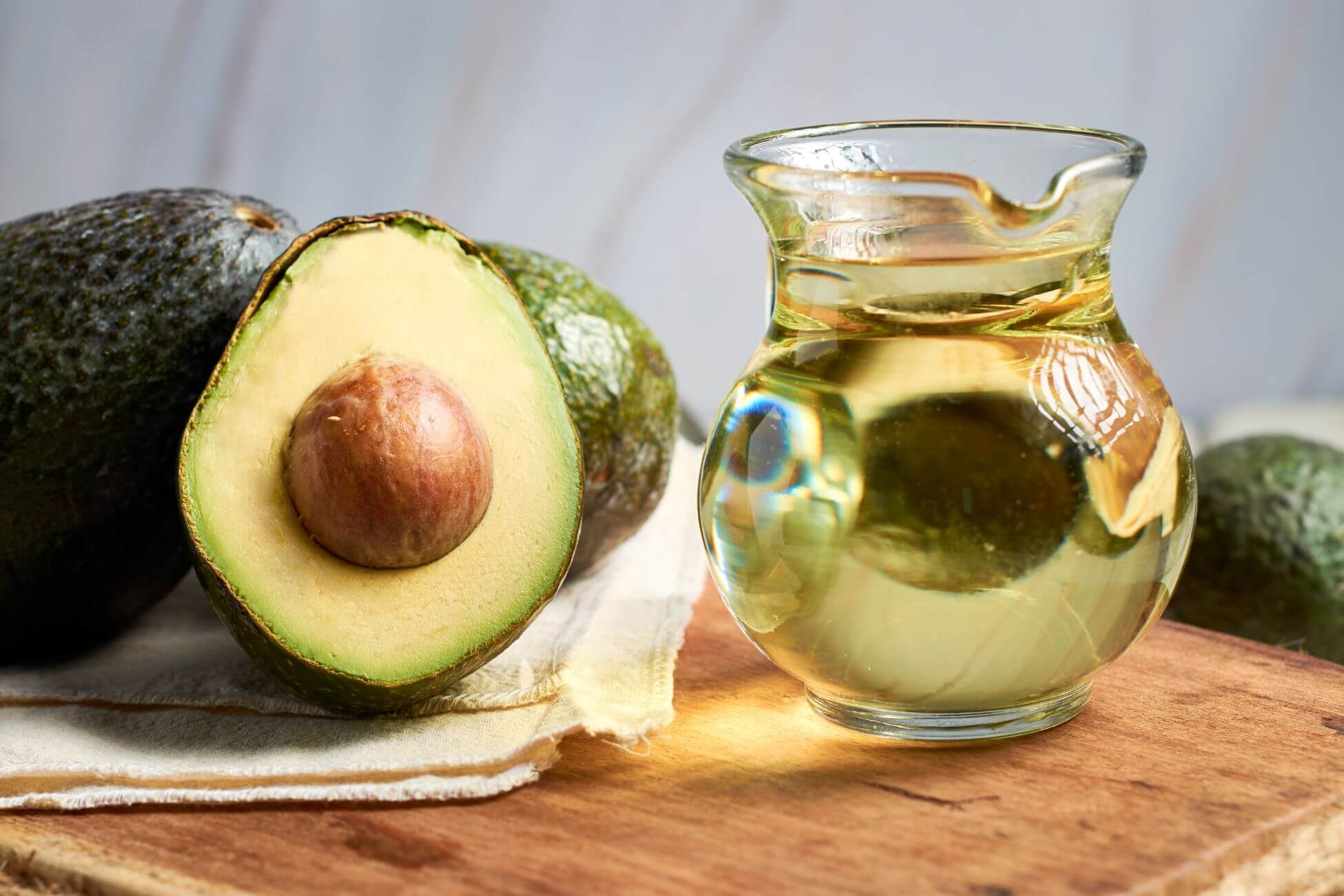
Avocado is a versatile and healthy option that can replace several ingredients in cooking and baking. It’s a great swap for butter, oil, and even some parts of desserts. Let’s see how avocado can improve our recipes:
Avocado oil steps in for butter in baking, adding moisture and a dose of health. The oil has a neutral taste and a high smoke point, perfect for all kinds of cooking. But remember, it’s not a perfect match for butter in every recipe, especially those that need butter’s specific qualities.
One thing to note, there’s no such thing as avocado butter because avocados have a lot more water. But don’t worry, avocado oil is here to make our dishes delicious and nutritious.
3. Avocado as a Substitute for Mayonnaise
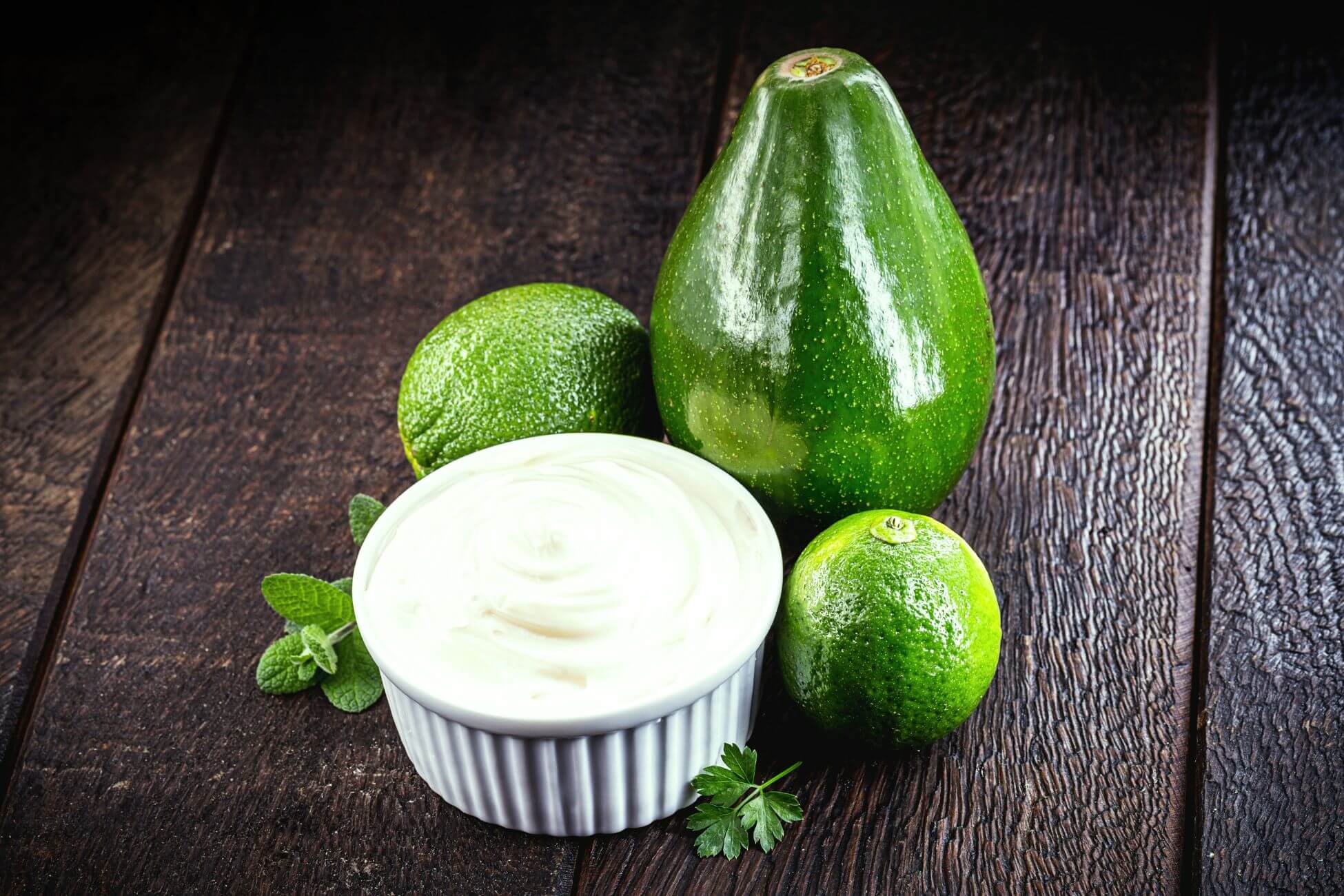
Looking for a healthier twist in your tuna or chicken salad? Avocado steps in deliciously for mayonnaise, giving your meal a creamy lift without the extra fat. This green fruit works great as a mayo replacement because it’s smooth and full of good fats. Plus, it adds a fresh taste that goes perfectly with classic mayo dishes.
Here’s how to substitute avocado for mayo:
- For Sandwiches – Spread mashed avocado on your bread for a tasty change.
- For Salads – Mix diced avocado with your chicken or tuna, and you’re all set.
Remember, avocado can turn brown fast. To keep it looking fresh, use it right after you mash it. Enjoy your new, healthier meals with avocado instead of mayo.
4. Avocado as a Sour Cream Substitute
Looking to switch up your baked potatoes? Avocado makes a great replacement for sour cream. It adds a creamy twist that’s both tasty and different.
You can also blend avocado with sour cream to make a dip. Just mix equal amounts of avocado and sour cream. Add feta cheese, garlic, olive oil, walnuts, salt, and pepper. This dip is perfect for those who like their snacks as creamy and tangy.
Avocado is a versatile fruit that can jazz up your meals. Whether you’re tired of the same old flavors or just want to try something new, avocado is a delicious option.
5. Fried, Baking, and Grilling Avocado
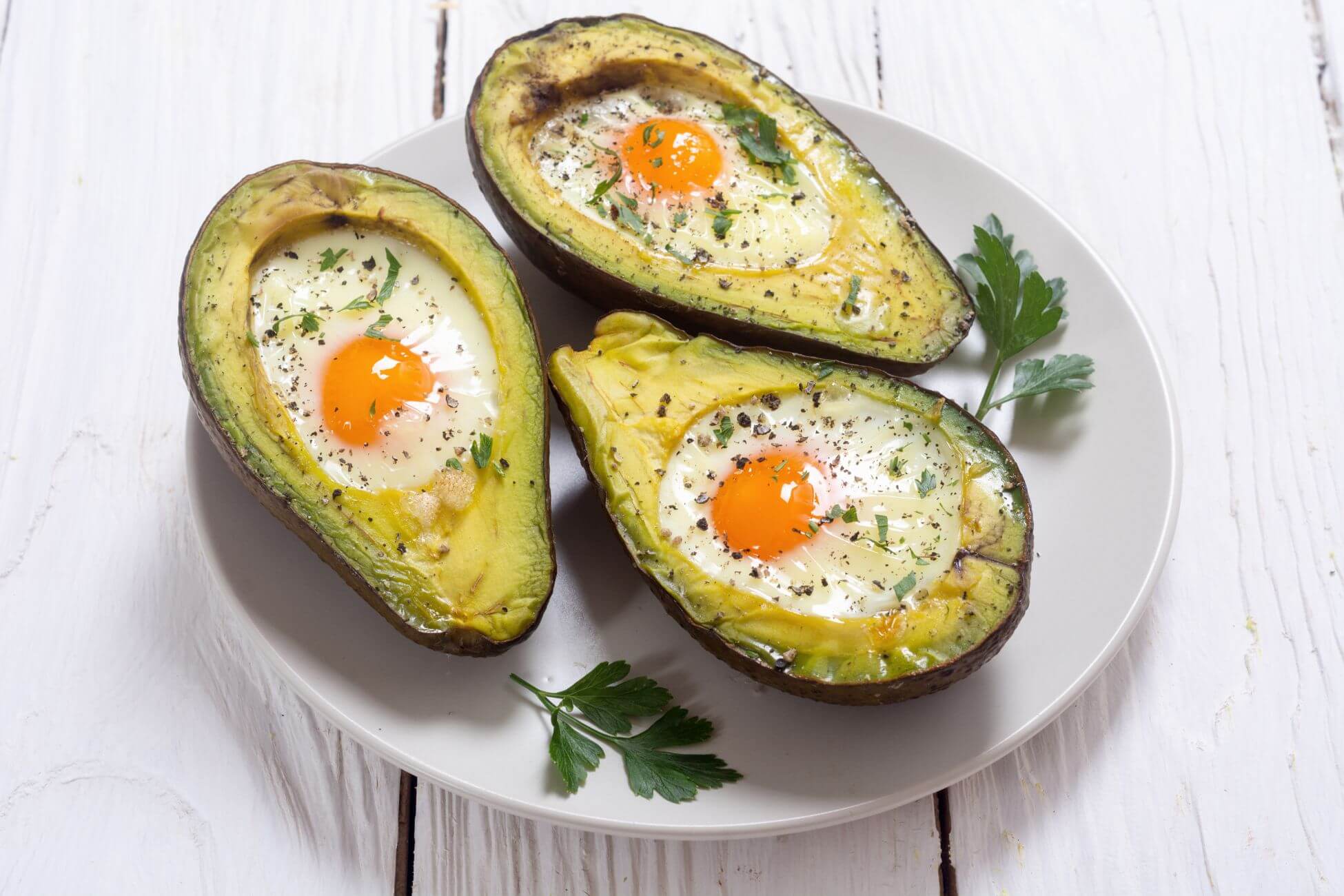
Choosing baked avocado fries over the classic potato option is a smart move for a healthier diet. Avocados are packed with nutrients and taste delicious when baked. They make a perfect match with favorite dips like ketchup or mustard. It’s an easy switch that boosts the health benefits of your snack or meal.
Try an avocado half with an egg where the avocado pit once sat. Bake it with the topping or seasoning of your choice.
Eating out? Keep in mind that not all avocado dishes are equally healthy. Some might be prepared with more oil or breading than others. Ask your server about how the dish is made to pick the healthiest option.
6. Avocado Bread
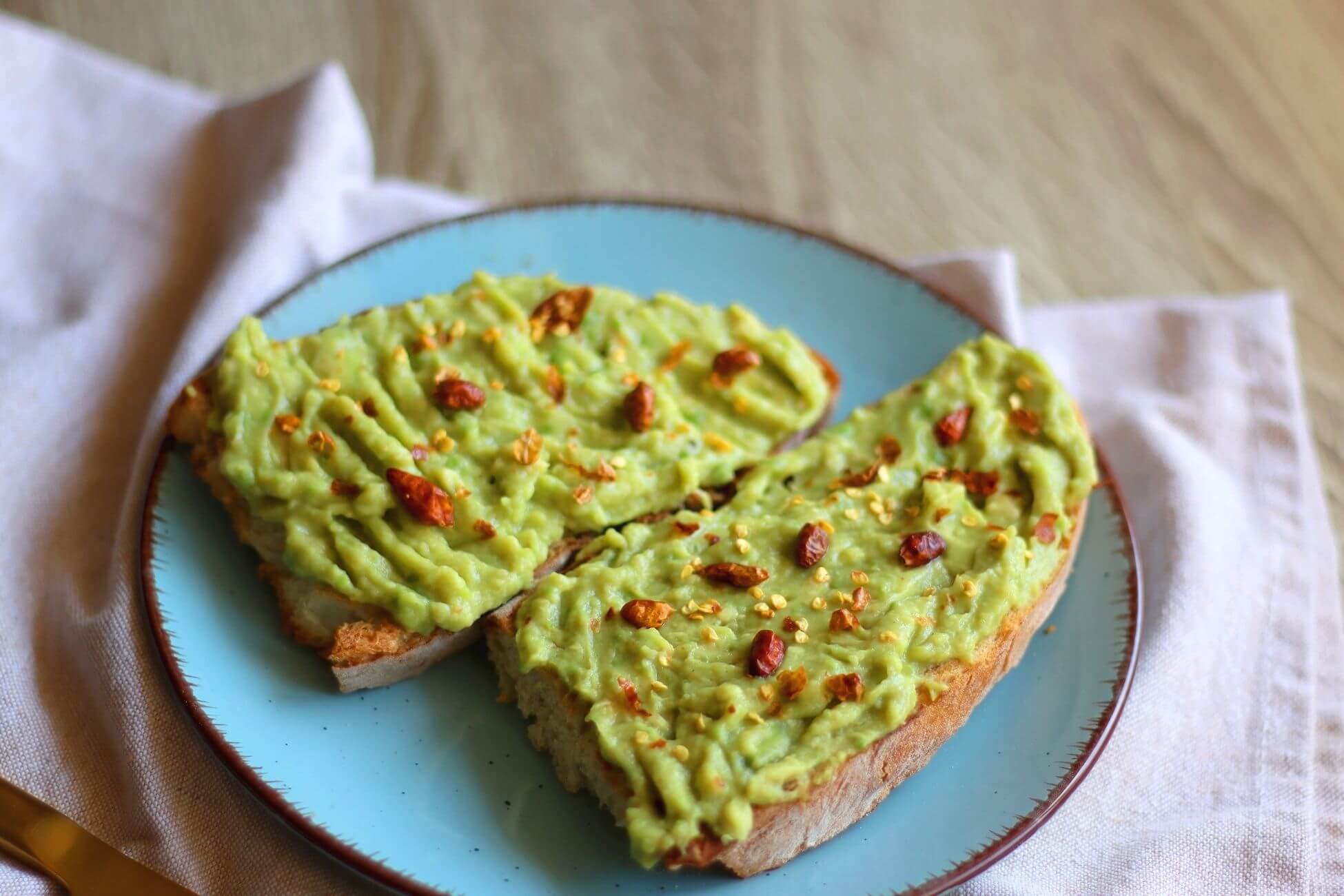
Many people enjoy avocado toast because it tastes great and offers some health benefits. Avocado is rich in monounsaturated fats, fiber, and various vitamins and minerals, making it a nutritious choice. When you pair avocado with whole-grain bread, you get a mix of healthy fats and good carbs.
Here’s a fun tip: if you like baking zucchini or banana bread, try using avocado instead of banana. This swap adds a unique twist to your recipe and boosts the healthy fat content of your bread.
Avocado toast stands out as a dish that’s both delicious and good for you. It’s a simple meal that packs a nutritional punch, thanks to the superfood status of avocados and the health benefits of whole grains.
7. Avocado Pasta Sauce
Looking for a new twist on pasta sauce? Try making a creamy sauce using tomatoes and avocado. Avocado is a great healthy option that adds a smooth texture to your sauce.
Here’s a simple guide to get you started:
- Prepare the Avocado – Peel and pit the avocado.
- Blend the Ingredients – In a blender, mix the avocado with tomatoes, olive oil, lemon juice, garlic, and your favorite spices until smooth.
- Heat the Sauce – Warm it up in a pan, but don’t let it boil.
This sauce goes well with all kinds of pasta. It’s a fresh, tasty way to enjoy your favorite noodles.
8. Pickled Avocado
Some people have experimented with pickling avocados and liked the outcome. One person shared a recipe using water, apple cider vinegar, and a mix of spices. Another person tried a recipe from the internet and said the taste was tangy and buttery.
Pickling works best with avocados that are still a bit hard. This way, they keep their shape as they soak up the flavors.
People are unsure about pickling avocados because they’re so full of healthy fats and have a unique texture. They worry that the pickling liquid won’t reach the middle, just the outside. But, some recipes online promise that pickled avocados are delicious and creamy.
9. Avocado in Pudding and Smoothies
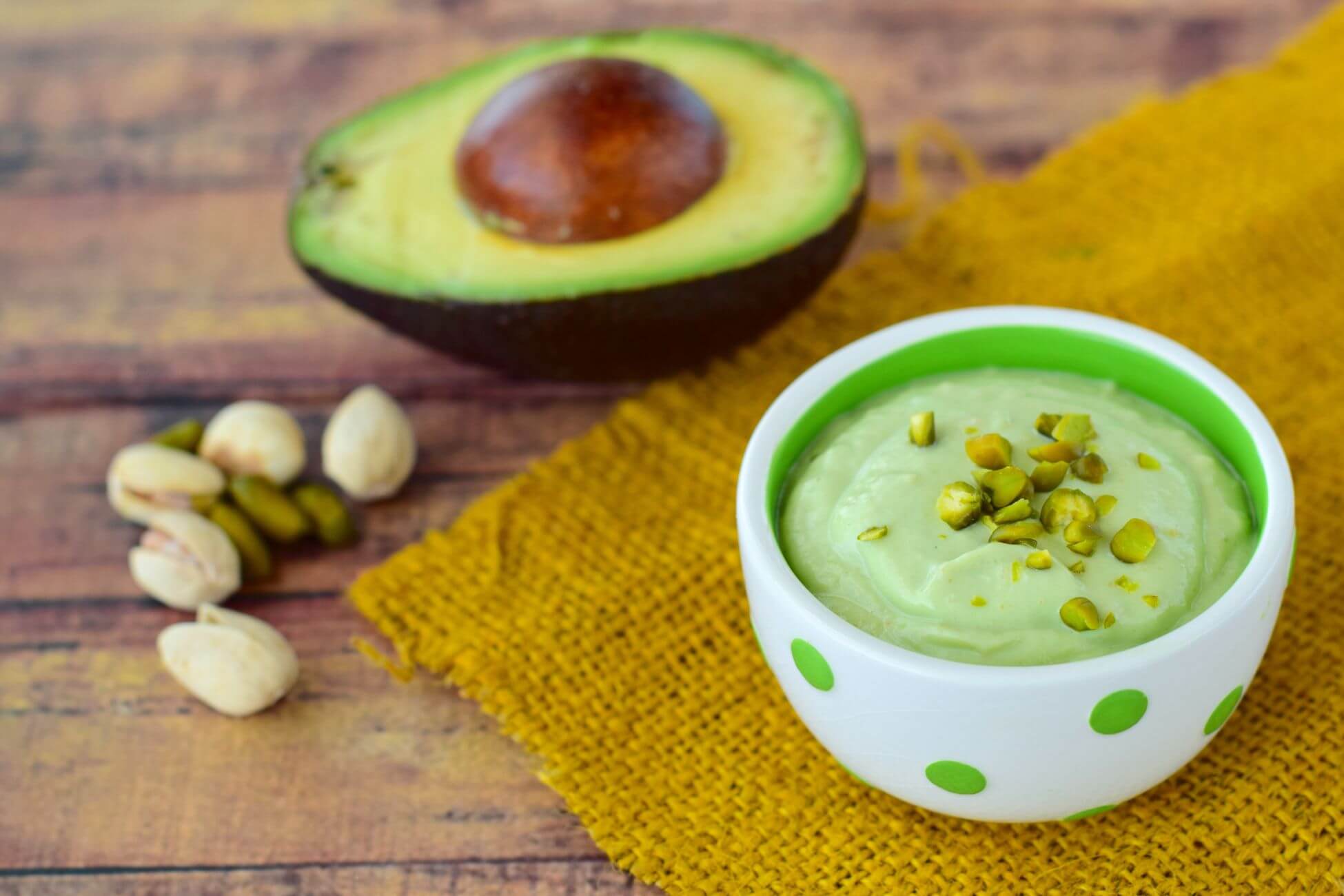
Avocados are a great addition to smoothies and puddings because of their smooth, creamy texture. You can blend them with pineapple, banana, or leafy greens to create a super nutritious treat.
For a smooth cacao and avocado smoothie, make sure to add enough liquid. Cover all the ingredients with almond milk, then add a little extra. This will help everything blend perfectly.
If you like your smoothie thick but don’t want to use yogurt or peanut butter, there are other ways to get that creamy texture:
- Freeze banana slices and blend them in.
- Add oats for thickness and extra nutrition.
- Chia seeds can also help by soaking up liquid and swelling, making your smoothie thicker and more filling.
10. Avocado as a Salad Dressing
Adding avocado to your salad not only tastes great but also boosts its nutritional power. The fats in avocado help your body absorb more of the good stuff from the other veggies. This means you get more nutrients when you have avocado in your salad.
If you ever swing by Chick-fil-A, you might find Avocado Lime Dressing ready to go. But it’s not a sure thing at every spot.
Here are a couple of tips to perfect your avocado dressing:
- Hand-mash your avocado for a smoother dressing.
- If you blend it, go slow to avoid a bubbly dressing.
In Chinese avocado salads, the white dressing is a mix of sweet and savory. It usually includes:
- Mayonnaise
- Sugar or honey
- Rice vinegar
- Sesame oil
- Garlic
- Mustard
- Sometimes sesame paste or soy sauce
11. Avocado in Your Scrambled Eggs
Adding avocado to your scrambled eggs can create a deliciously creamy twist. However, some people might not like this combo, finding the avocado tastes a bit “soapy” when mixed with eggs. This odd flavor could be because the avocado got a little warm, or it might just be a personal preference.
Avocado comes in lots of tasty forms, from avocado fries to avocado egg rolls. But when they’re breaded and fried, these treats get pretty high in fat and calories.
Here are some tips to get the best flavor when you mix avocado and scrambled eggs:
- Keep the avocado cool until you add it to your hot eggs. This can help prevent that soapy taste.
- Use the right cooking tools. Some people say silicone spatulas can change the taste of eggs.
- Don’t cook the avocado. Add it to your eggs at the end to keep its creamy texture.
These small tweaks can make a big difference in how your avocado and egg dish tastes.
13. Avocado Soup
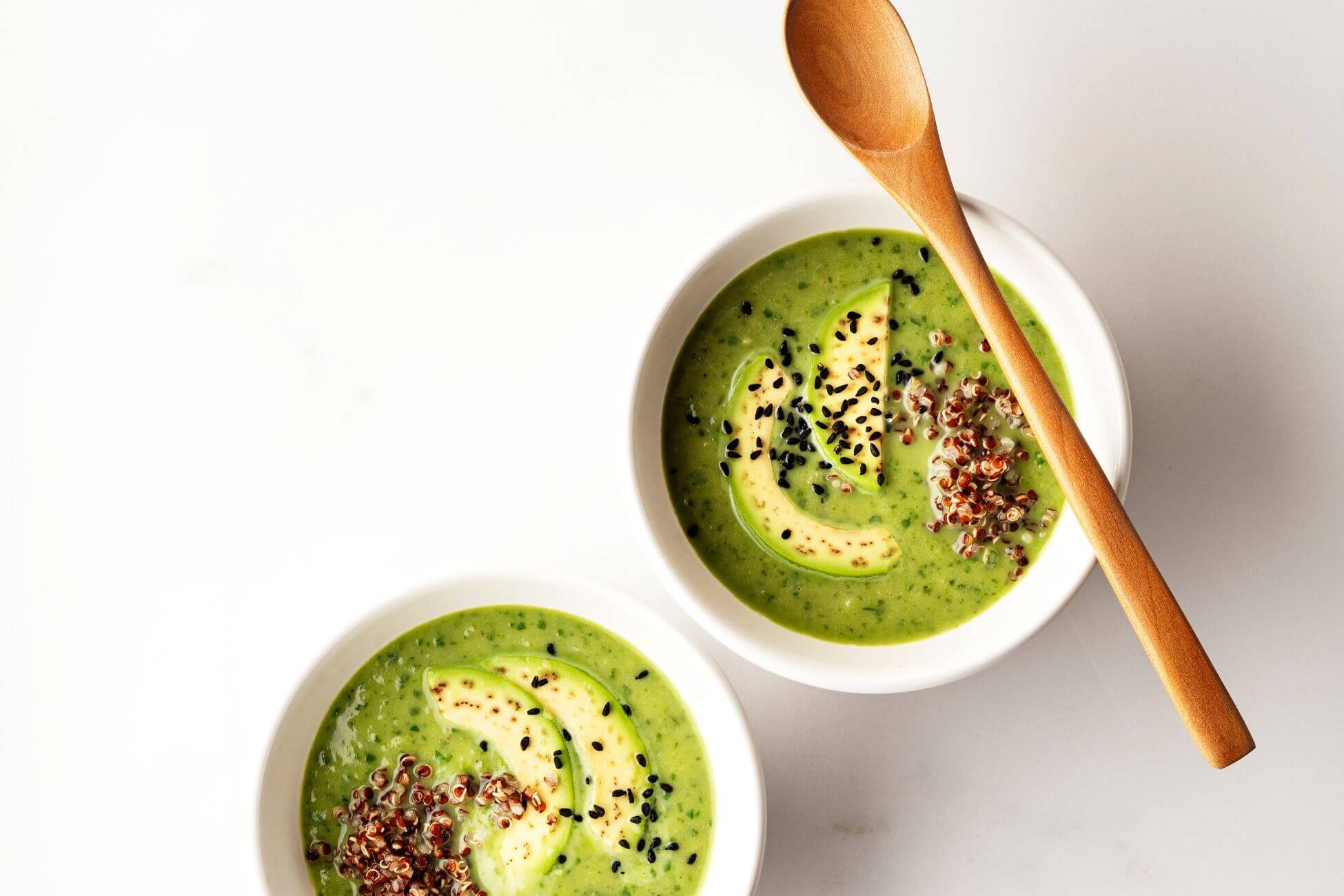
Avocado is a versatile fruit that can upgrade your soup game. You can blend it into a creamy avocado soup or add chunks to enrich other soups from your recipe collection.
Here are a few ideas to get you started:
- Chilled Avocado Soup with Crunchy Garlic Oil from Ottolenghi
- A refreshing Cold Cucumber Avocado Soup
Remember, if you prep your avocado soup in advance, the avocado might not look or taste its best. To keep it fresh, add the avocado to the soup just before you serve it. This way, you’ll enjoy the full flavor and freshness of this fantastic fruit in your soup.
14. Avocado in Ice Cream
Did you know that you can make a nutritious version of ice cream using avocados? This recipe is perfect for those looking for a healthier treat. By blending avocados with cream, milk, sugar, and lime juice, you create a deliciously creamy ice cream that’s great for cooling off on hot days.
This avocado ice cream is not only tasty but also offers a dose of healthy fats and a unique flavor. It’s a fun way to enjoy a classic dessert with a twist that’s good for you. If you’re into trying new, healthier recipes, this one might just become a favorite.
Here’s a simple guide to making avocado ice cream:
Ingredients: Ripe avocados, cream, milk, sugar, lime juice
Instructions:
1. Prep – Cut the avocados and squeeze the lime juice.
2. Blend – Mix the avocados, cream, milk, sugar, and lime juice until smooth.
3. Freeze – Pour the mixture into a container and freeze it until solid.
4. Serve – Scoop out the ice cream and enjoy!
This recipe is a great way to sneak some extra nutrients into a sweet treat. Plus, it’s a cool option for those who love ice cream but want to watch their sugar intake. Whether you’re an avocado fan or just looking for something new, this ice cream is worth a try.
Try Making an Avocado Face Mask

Making an avocado face mask is easy and it’s great for your skin. You only need a few things and you’re ready to go. Here’s what you need and what to do:
Ingredients:
- One ripe avocado
- One tablespoon honey (optional, for extra moisture and to fight bacteria)
- One tablespoon plain yogurt (optional, for more nutrients and to help remove dead skin)
Instructions:
1. Cut the ripe avocado in half, take out the pit, and scoop the flesh into a bowl.
2. Add the honey and yogurt to the bowl with the avocado.
3. Mash everything together until it’s a smooth mixture.
4. Apply the mixture to your face, avoiding your eyes.
5. Relax for about 15 minutes.
6. Rinse your face with warm water.
This mask gives your skin a lot of good benefits. Avocado is full of vitamins that help your skin stay healthy. Honey fights bacteria and adds moisture. Yogurt has nutrients that your skin can soak up and help remove dead skin.
It’s a treat for your skin that’s easy to make. Enjoy your spa day at home!
Avocado is a Fruit Final Thoughts
Avocado is a unique food that sparks the fruit or vegetable debate. But setting that aside, we can all agree that it has amazing health perks. Packed with nutrients like vitamins, minerals, and antioxidants, avocado is a superfood that does wonders for our well-being. It’s also rich in fiber, which is great for our digestion.
This fleshy fruit isn’t just for eating – it can also work wonders for your skin. With a simple recipe, you can turn avocado into a refreshing face mask. This natural treat will help your skin fight off the bad stuff, leaving you with a healthy glow.
No matter how you like to eat, avocado is a tasty and healthy choice. From being the star of your salad to sweetening up your smoothie, its creamy texture and mild flavor are always a hit. It’s a must-have for anyone who loves good food and looking after their health.
For more on questionable foods about whether they are fruit or vegetable, check out these posts:

